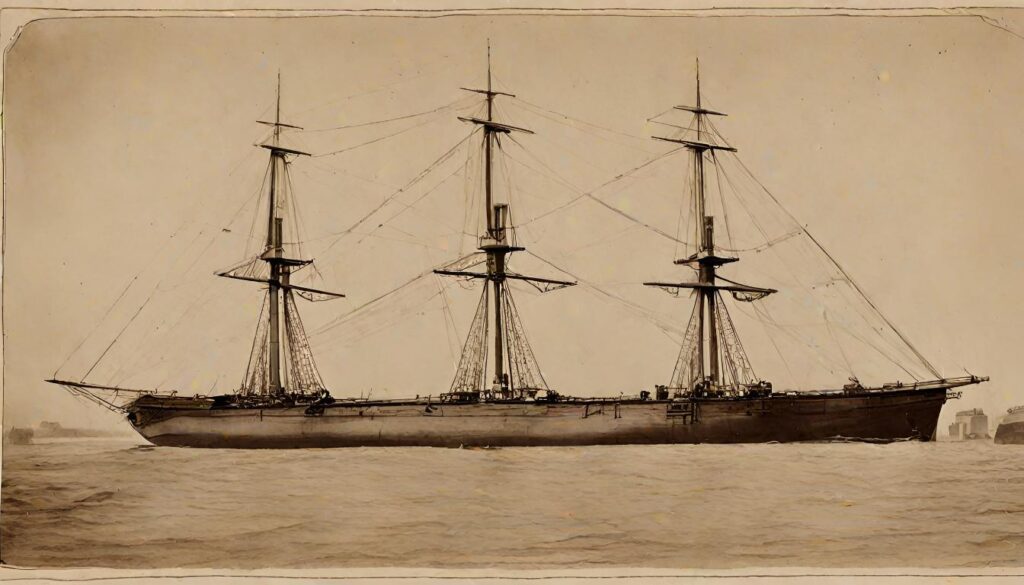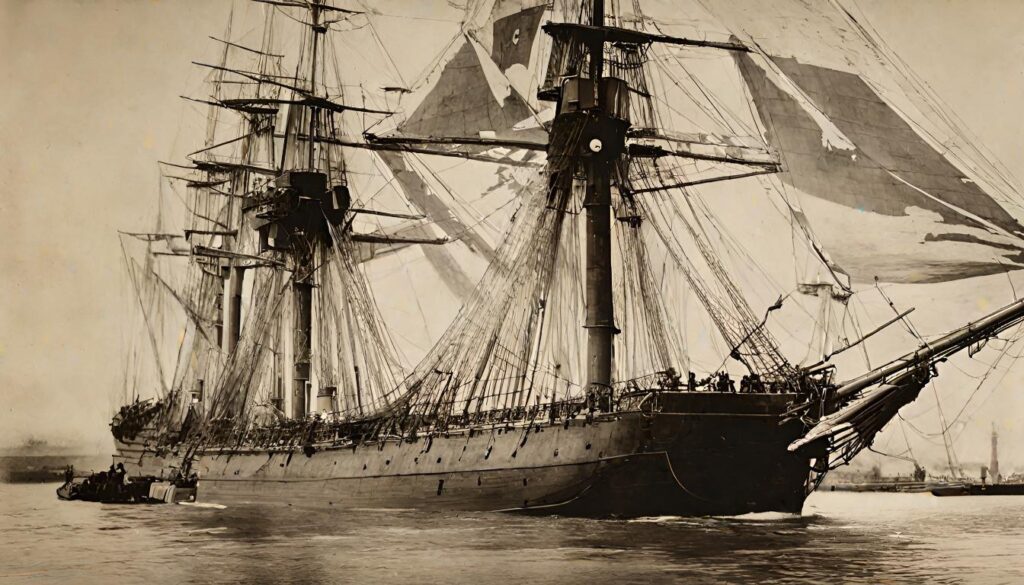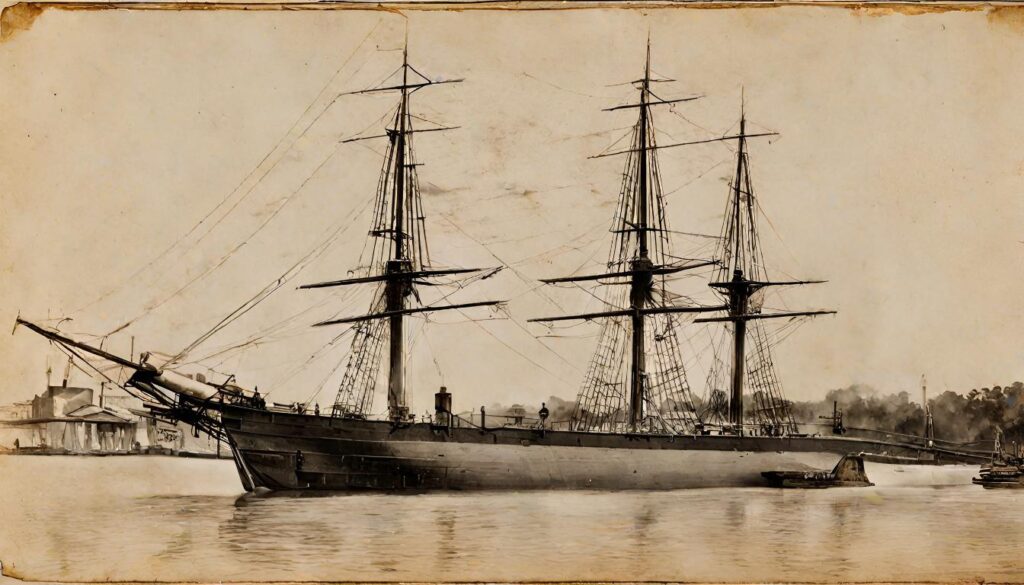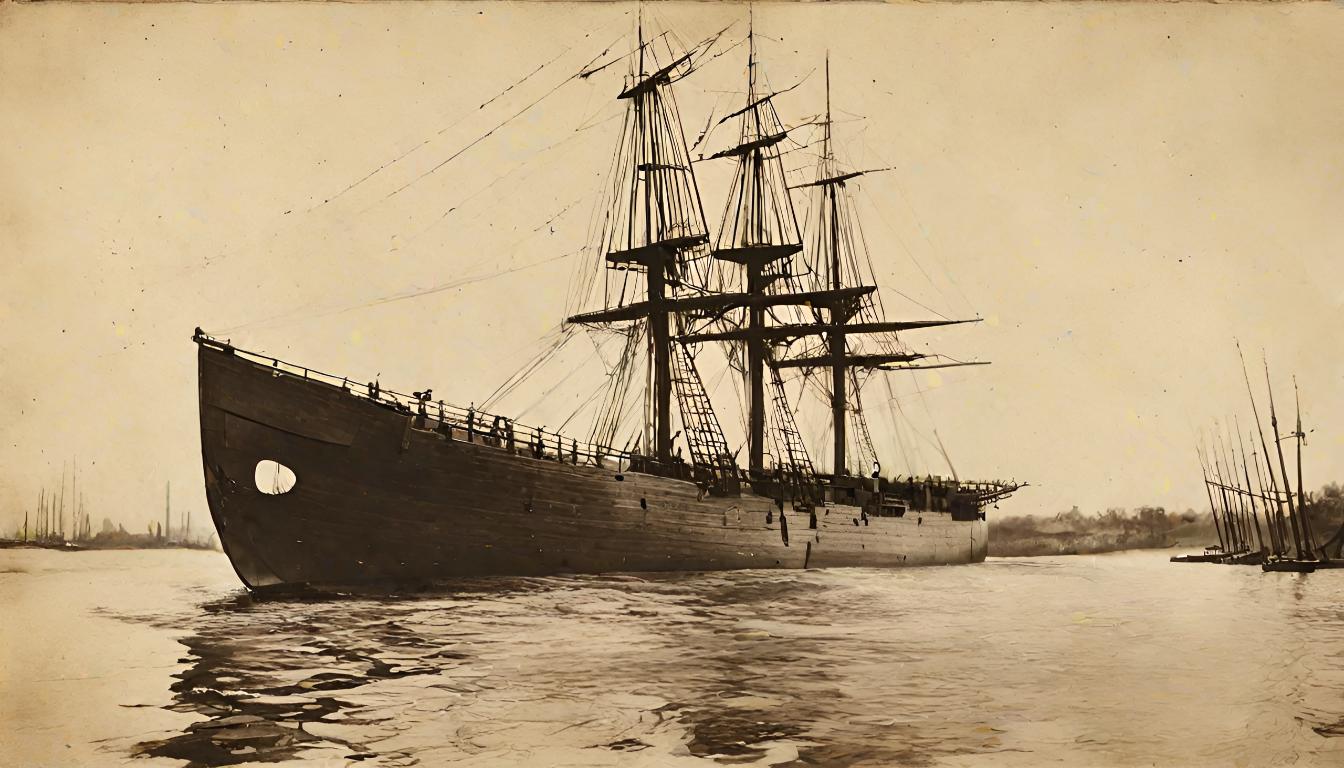Echoes of Valor: The 160th Anniversary of the USS Ethan Allen’s Raid on Myrtle Beach
In the dim light of dawn on April 23, 1864, the waters off the coast of Myrtle Beach harbored the gentle whispers of waves and the silent anticipation of a historic assault. The USS Ethan Allen, a formidable warship of the United States, loomed ominously a short distance from the shoreline, ready to launch an operation that would etch its name into the annals of Civil War history. This was not a scene of leisure that modern Myrtle Beach is synonymous with, but a moment poised to strike a crucial blow to the Confederacy’s resources.
The Prelude to the Raid
As the Civil War raged on, the Confederacy desperately needed essential supplies, among which salt was paramount. Salt, a seemingly mundane commodity, was crucial for preserving food for the Confederate army. Against this backdrop, the salt works at Singleton Swash and Withers Swash became invaluable targets. It was here, near what is now the Dunes Club and the bustling Family Kingdom Amusement Park, that the USS Ethan Allen set its sights, preparing to significantly disrupt the Confederacy’s salt supply.
Commanded by J. A. Pennell, the Ethan Allen harbored a crew ready for an amphibious assault, a tactic not commonly employed at the time. The mission had been informed by intelligence, notably from two escaped slaves who had taken refuge aboard the ship. They spoke of a large salt works operation near Cane Patch, 12 miles north of Murrells Inlet, an area now known as Singleton Swash.

The Assault on Singleton Swash
As the sun climbed higher on that fateful April day, Pennell anchored his ship off the shore and led a contingent of Marines onto the beach. What they found exceeded their expectations. The salt works sprawled across the area, far more extensive than any reports had suggested. Pennell described the operation in detail, noting the presence of 12 large pans at each of the four separate works, all designed to extract salt from the seawater, a process powered by horse-drawn mechanisms.
This was no small enterprise; the site was a hive of activity and an essential cog in the Confederacy’s war machine. Pennell and his men proceeded to dismantle this operation with precision. They destroyed the buildings, shattered the salt pans, and mixed the harvested salt with sand, rendering it useless. This sabotage was a testament to the strategic importance of denying resources to the enemy during wartime.
Destruction at Withers Swash
The following day, the Ethan Allen and its crew moved southward, their mission far from over. At Withers Swash, they encountered smaller but no less significant salt works. Prompted by a local waving a white handkerchief in surrender, they quickly ascertained the operation’s scale and proceeded to dismantle it, leaving another key Confederate resource in ruins.
This two-day operation along the Myrtle Beach coast marked a significant setback for the Confederate states, depriving them of a vital resource. But perhaps more importantly, it showcased the innovative military tactics of amphibious assault, setting a precedent for future operations in the Civil War and conflicts to come.

The Impact of the Raid
The raid on Myrtle Beach’s salt works was more than just a military operation; it symbolized the Union’s resolve and ingenuity. The immediate effects were felt in the Confederacy’s diminished ability to preserve food, but the long-term implications were far-reaching, demonstrating the strategic importance of resource denial in wartime.
Local historian Ted Gragg reflects on the raid’s significance, noting that many are unaware of Myrtle Beach’s role in the Civil War. This operation, he argues, is a testament to the area’s strategic importance and the sacrifices made by its inhabitants. The raid on the salt works, though a small chapter in the broader narrative of the war, highlights the interconnectedness of national events and local histories.
The audacity and success of the USS Ethan Allen’s mission under Captain J. A. Pennell’s leadership marked a significant moment in military history, not just for its immediate impact but for its precedent. The first amphibious assault introduced a new facet of warfare that would evolve into a critical strategy in modern military operations.
The Legacy in Local Memory
In the years following the Civil War, the tale of the USS Ethan Allen and its daring raid faded into the backdrop of the grand tapestry of American history. Yet, the sands of Myrtle Beach, mingled with the salt destroyed by Pennell and his crew, hold the echoes of this past. Local historians like Ted Gragg work diligently to bring such stories to the forefront, ensuring that the lessons and legacies of our ancestors are not forgotten.
The significance of this raid extends beyond the immediate tactical achievements. It showcases how strategic thinking and a willingness to embrace new approaches to conflict can alter the course of events.
Some historians theorize that remnants of the original salt works may still exist, hidden beneath the modern landscape of Myrtle Beach. The lake on the 11th hole at The Dunes Club, for example, is speculated to be part of the extensive salt works complex targeted by the raid. Such physical remnants serve as silent witnesses to the history that unfolded on these shores, offering a tangible connection to the past for both locals and visitors alike.

Reflections on War and Memory
The story of the USS Ethan Allen’s raid is more than a mere footnote in the history of the Civil War; it portrays the myriad ways in which small-scale actions can have far-reaching consequences. It reminds us of the importance of remembering and studying our history, not just the battles and generals but the strategies, sacrifices, and innovations that shaped the outcomes of those tumultuous years.
This chapter of Myrtle Beach’s history also prompts a reflection on how we remember and honor those who served and sacrificed. In a nation marked by civil strife, the stories of those who fought, strategized, and lived through the war’s shadows are all threads in the larger fabric of our collective memory.
As we commemorate the 160th anniversary of this historic raid, we are reminded of history’s enduring impact on our present and future. History beckons us to explore deeper, uncover the stories untold, and appreciate the complex tapestry of our nation’s past.
The USS Ethan Allen’s raid on Myrtle Beach’s salt works, while a relatively small engagement within the vast scope of the Civil War, underscores the strategic innovation and courage that characterized much of the conflict. It serves as a poignant reminder of Myrtle Beach’s and Horry County’s roles in a pivotal chapter of American history. As we reflect on this 160th anniversary, let us remember the broader lessons it teaches us about resourcefulness, resilience, and the importance of preserving our history for future generations to learn from and be inspired by.




